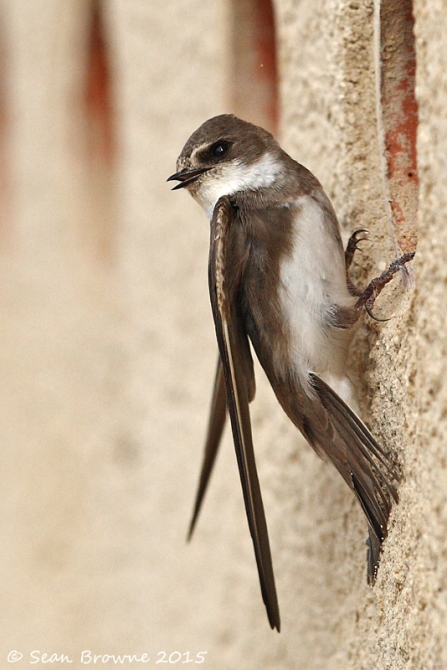Whilst I had written about the sand martins on a number of occasions and had a reasonably good understanding of what was involved in the recording and ringing activities - finding out the details first hand proved to be a real eye opener. I knew it was important to maintaining the success of the colony and helping build a picture of the birds' behaviours, but I'd rarely been able to spend so much time learning about the detail and I'd never had such privileged or the opportunity to see the birds up close.
Privileged behind the scenes access
Recently I was lucky to accompany one of a special band of volunteers who help us to monitor a colony of sand martins in our purpose built sand martin nesting bank and viewing hide at Attenborough Nature Reserve.
I knew sand martins were small, but to see the eggs in the nest, eggs which seemed no wider than the nail on my little finger, was astonishing. The thought that a bird could hatch from something so small and yet within a matter of weeks be strong enough and capable enough flier to set off on a journey from Nottinghamshire to Africa is almost mind blowing.
I've often highlighted the passion and knowledge of our volunteers, but seeing the level of skill and expertise with which the nests were checked was enlightening. Whilst there were no chicks to be ringed on this occasion, it was still a wonderful experience and one which underlines why what Nottinghamshire Wildlife Trust does, with the support of our volunteers and donors, is so important.
This year hasn't been a great one for sand martins. Whilst they've done better than we thought they might after the cold start to the breeding season, the numbers using the nesting bank are still considerably down on previous years and I wouldn’t be surprised if other colonies have fared poorly too. However, if we hadn't built the artificial nesting bank four years ago we would almost certainly have lost the colony at Attenborough altogether as the natural sand bank they previously occupied has now collapsed and with the quarry no longer active, no new faces are being created for these amazing birds to colonise. Saying all that we have had a success with the thousandth chick fledging this year since the 'hotel' has been built in 2014.
The records generated by volunteers ringers help build a picture of bird populations and help scientists monitor trends, helping conservation action plans to be developed. These can help prevent species from becoming at risk or even bring them back from the brink of extinction.
Without volunteers conservation charities such as Nottinghamshire Wildlife Trust would simply not be able to deliver the work needed to care for wild places, campaign to protect species or to provide opportunities for people to learn about wildlife. Volunteers are the lifeblood of our work. As well as carrying out key work, bringing skills, knowledge and passion, volunteers also enable charities to make supporters donations go further, something that in challenging economic times is more important than ever.
In twenty five years of working with volunteers I’ve noticed one very annoying habitat that many of them have. They often describe themselves as being ‘just’ a volunteer. In my book, there’s no such thing as just a volunteer. They have always been and will remain crucial to the success of wildlife conservation and so much other vital work in our society.


